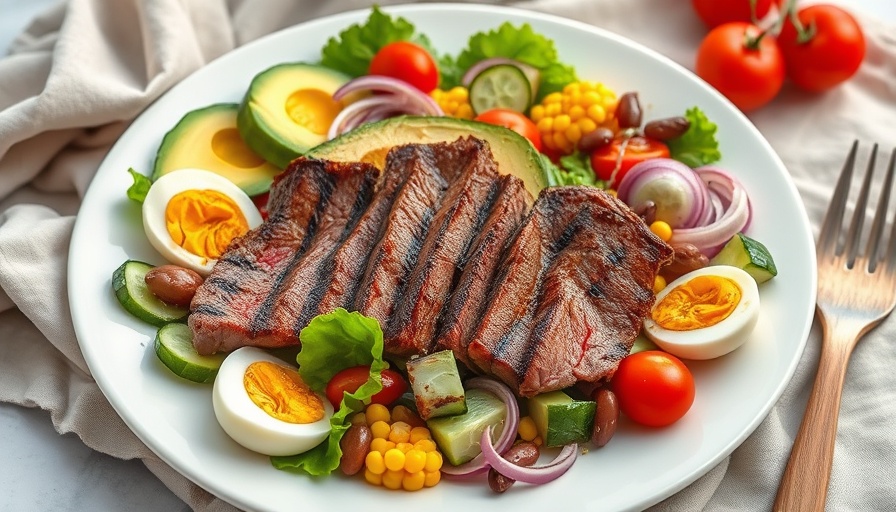
Discover the Flavorful Excitement of Steak Salads
For many, salads are often perceived as boring or bland, but a grilled steak salad can turn that notion on its head. With vibrant greens, hearty cuts of steak, and bold toppings, these salads become a delightful concoction of flavors that satisfy cravings while also providing nutrition. Each recipe featured here showcases how to combine quality ingredients elegantly, creating satisfying meals that can easily fit into a busy lifestyle.
Elevate Your Salad Game with Grilled Steak
Steak has always been a favorite for its rich flavor and satisfying texture. Incorporating it into a salad not only adds protein but also enhances the overall taste experience. Consider classic pairings like cilantro, lime, and fresh vegetables to revitalize your salad dishes. Here are some standout recipes for a variety of tastes.
1. Zesty Cilantro Lime Steak Salad
Perfect for those craving a Mexican-inspired dish, this salad features perfectly grilled flank or ribeye steak atop a bed of greens loaded with sweet corn, tomatoes, avocado, and red onion. Drizzle with a zesty cilantro-lime dressing to elevate the fresh flavors, topped off with tangy queso fresco for a delightful finish.
2. Bold Honey Balsamic Steak Salad
This robust salad showcases quick-cooking skirt steak, accompanied by Roma tomatoes, red onion, avocado, corn, and lettuce. The honey garlic balsamic vinaigrette perfectly contrasts the savory ingredients, creating a harmonious blend. For best results with skirt steak, cook it no more than medium-rare, ensuring a succulent bite every time.
3. Sweet Strawberry Steak Salad
Indulge in a unique combination of steak, strawberries, blueberries, peppery arugula, and crunchy almonds. This salad captures the essence of sweet and savory, and is dressed with a delightful balsamic vinaigrette. A sprinkle of fresh black pepper enhances the flavors, making it an excellent choice for a weeknight dinner.
4. Rich Caesar Steak Salad
Taking a classic Caesar to new heights, this version pairs ribeye steak with homemade Parmesan crisps and a creamy Caesar dressing. The rich flavors meld together for an indulgent yet simple meal. Enhance your dressing by adding Greek yogurt, upping the nutrition content while keeping that beloved creamy texture.
The Benefits of Grilled Steak Salads
Grilling steak not only adds an incredible flavor but also reduces the need for unhealthy frying methods. When embraced with wholesome ingredients, steak salads can become a nutritious meal option that satisfies both the appetite and health goals of busy individuals. Pairing steak with fresh vegetables ensures you're loading up on vitamins and minerals while also enjoying a protein-rich meal that fuels your body for the day ahead.
Conclusion: Savoring Healthy Eating
With these grilled steak salad recipes, you can redefine what it means to eat healthy. These flavorful combinations break the myth of salads being bland and instead offer a vibrant, nutritious option for anyone leading a busy life. Whether for lunch or dinner, building your steak salad around quality meats and fresh produce ensures you’re serving up something both delicious and healthy. Dive into these recipes, delight your taste buds, and embrace a healthier lifestyle.
 Add Row
Add Row  Add
Add 







Write A Comment